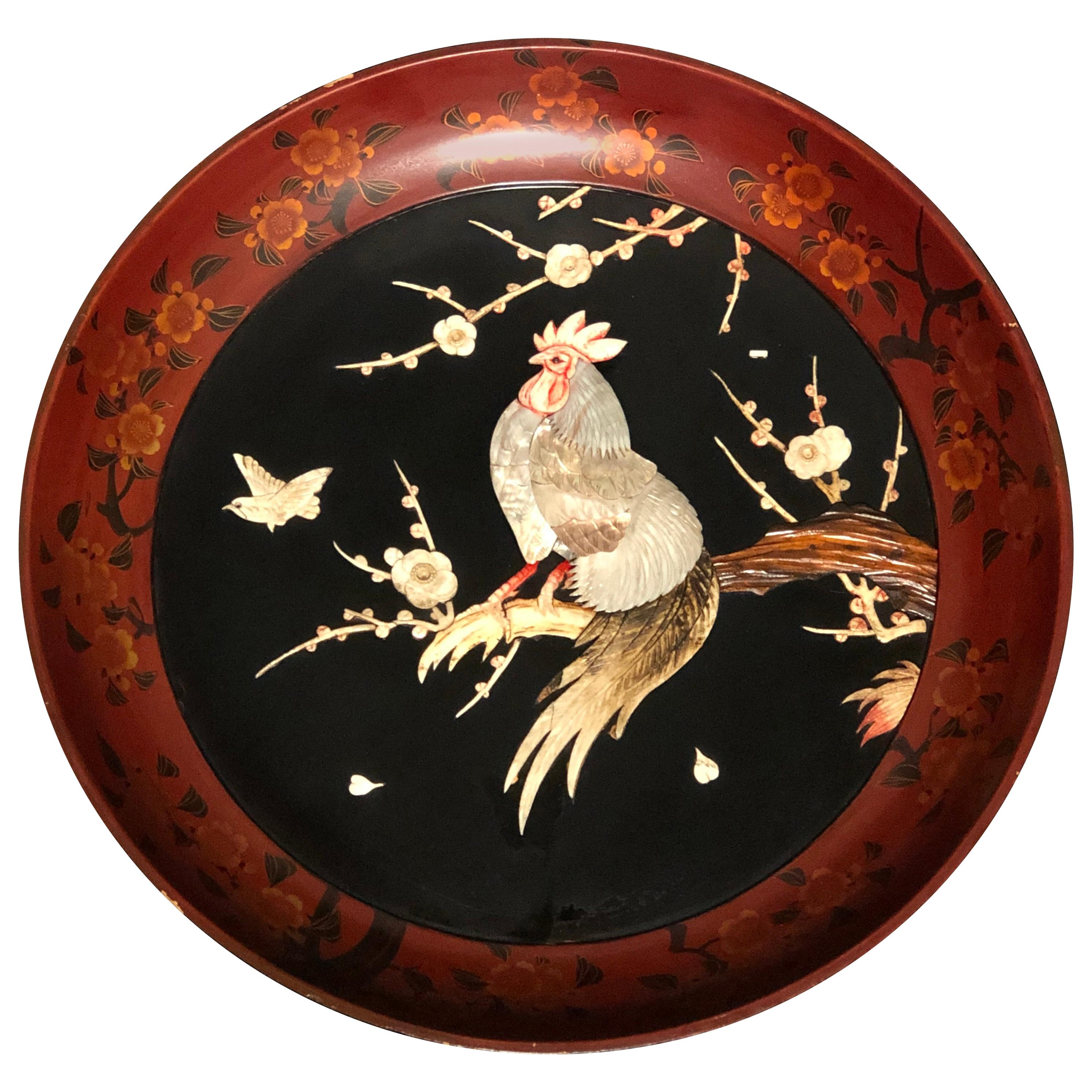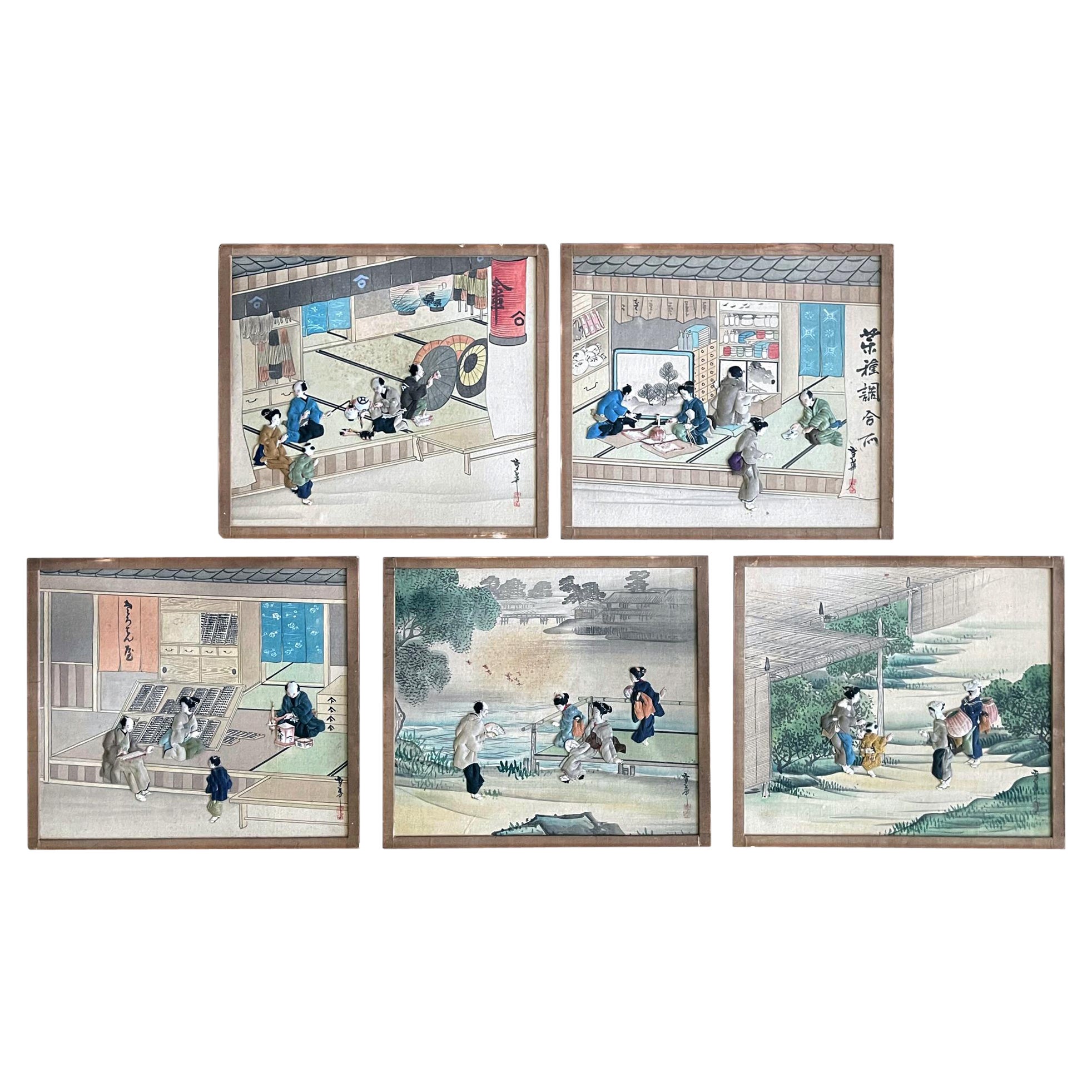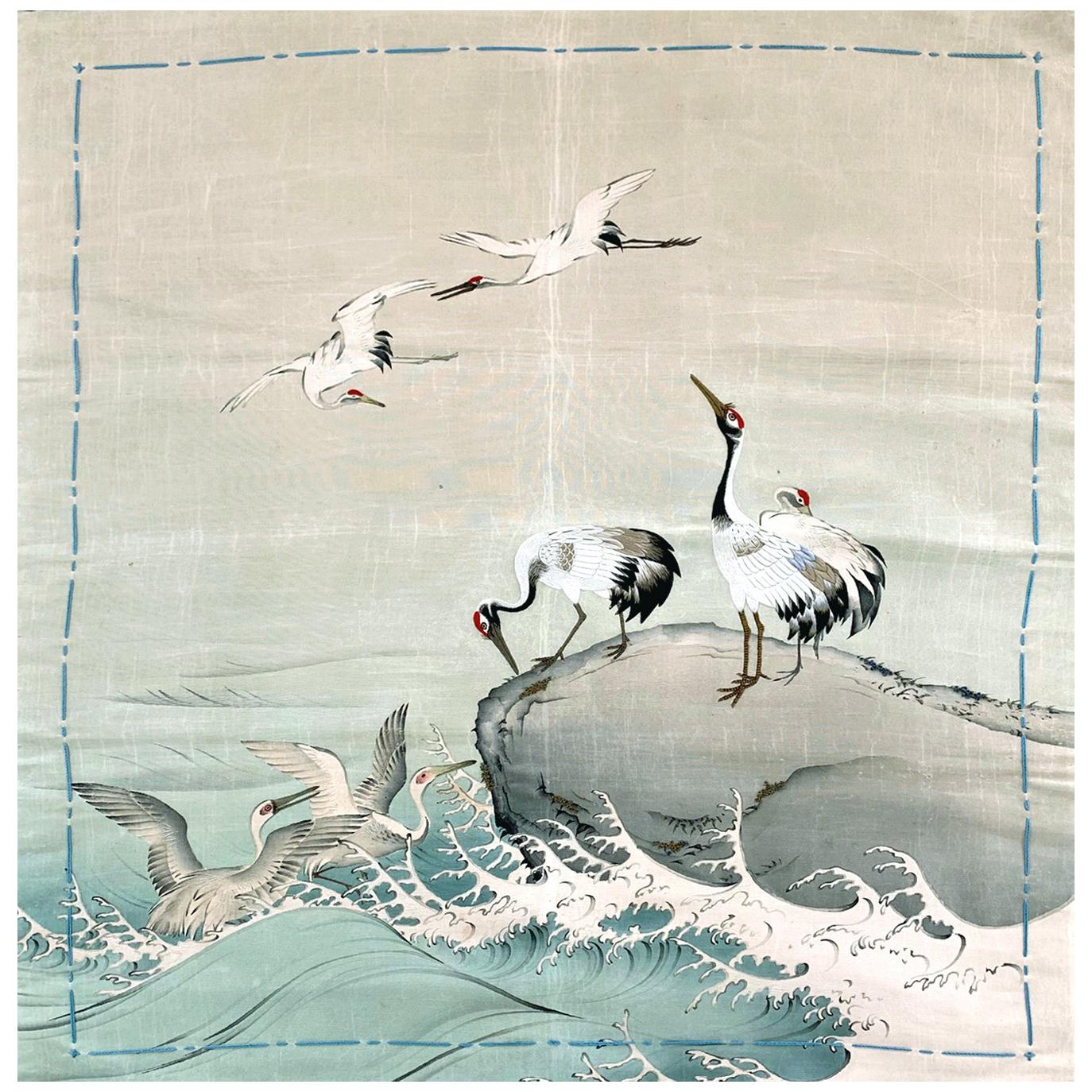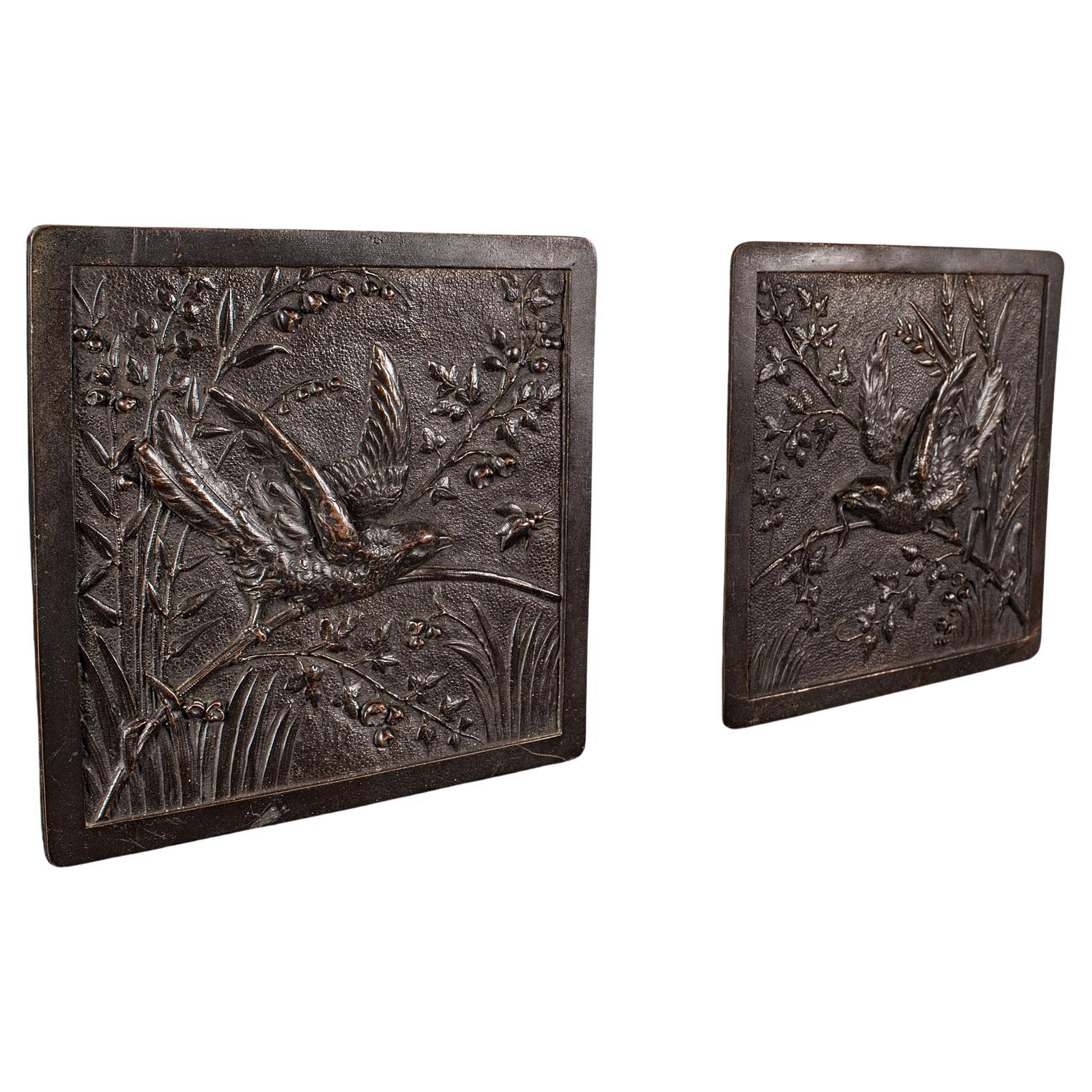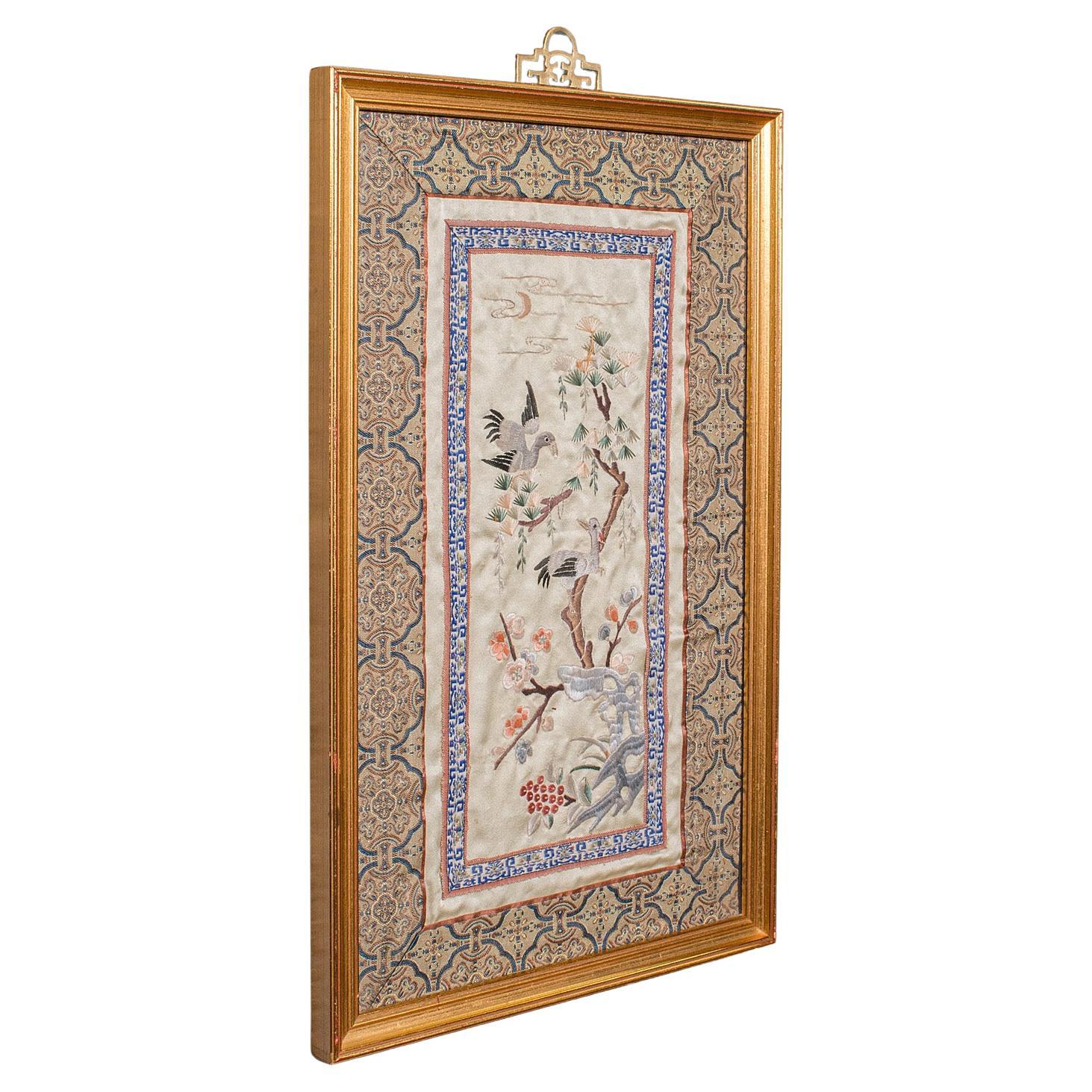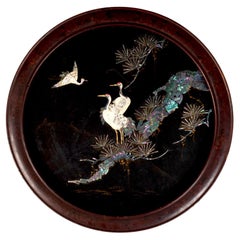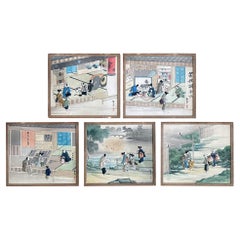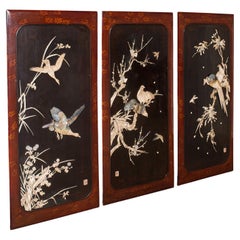
Trio of Antique Shibayama Panels, Japanese Decorative Screen, Meiji Period, 1900
View Similar Items
Want more images or videos?
Request additional images or videos from the seller
1 of 11
Trio of Antique Shibayama Panels, Japanese Decorative Screen, Meiji Period, 1900
About the Item
- Dimensions:Height: 44.3 in (112.5 cm)Width: 20.87 in (53 cm)Depth: 1.38 in (3.5 cm)
- Sold As:Set of 3
- Materials and Techniques:
- Place of Origin:
- Period:
- Date of Manufacture:circa 1900
- Condition:Wear consistent with age and use. Presented in very good antique condition.
- Seller Location:Hele, Devon, GB
- Reference Number:Seller: 18.82321stDibs: LU2645327943672
About the Seller
5.0
Platinum Seller
These expertly vetted sellers are 1stDibs' most experienced sellers and are rated highest by our customers.
Established in 2005
1stDibs seller since 2017
839 sales on 1stDibs
Typical response time: 1 hour
More From This SellerView All
- Pair Of Antique Decorative Wall Plaques, Japanese, Bronze, Edo Period, VictorianLocated in Hele, Devon, GBThis is a pair of antique decorative plaques. A Japanese, bronze wall panel, dating to the early Victorian period, circa 1850. Accentuate your wall ...Category
Antique Mid-19th Century Japanese Decorative Art
MaterialsBronze
- Antique Decorative Panel, Japanese, Framed, Silk Cotton Embroidery, VictorianLocated in Hele, Devon, GBThis is an antique decorative panel. A Japanese, framed silk cotton embroidery, dating to the late Victorian period, circa 1900. Appealing silk work, framed...Category
Antique Late 19th Century Japanese Late Victorian Decorative Art
MaterialsCotton
- Antique Decorative Posy Vase, Japanese, Bronze, Meiji Period, Urn, VictorianLocated in Hele, Devon, GBThis is an antique decorative posy vase. A Japanese, bronze Meiji period urn, dating to the late 19th century, circa 1900. Adorned with superb relief bird figures over a wonderful bulb form Displaying a desirable aged patina with minimal weathering Bronze shows appealing tonality with a warm chestnut colouration Decorated with the hallmarks of the Meiji period of Japanese history (1868-1912) Wide flared rim with a flat top edge, with an opening diameter of 10cm (4'') Decorative relief birds sit prominently around the body Large phoenix type bird to the front fascia, the ground accentuated with engraved foliate patterns Traditional character mark can be found upon the base This is a fascinating antique decorative posy vase, with classical Japanese...Category
Antique Late 19th Century Japanese Vases
MaterialsBronze
- Large Antique Decorative Vase, Japanese, Bronze, Meiji Period, Urn, VictorianLocated in Hele, Devon, GBThis is a large antique decorative vase. A Japanese, bronze Meiji period urn, dating to the late Victorian period, circa 1900. Highly impressive antique vase with striking detail Displays a desirable aged patina by way of fine weathering Bronze shows a wonderful tonality with a light tarnish from decades of careful polish Decorated with key icons from the Meiji period of Japanese history (1868-1912) Broad, tapering rim with rolled lip, embellished by way of garland detail Panel scenes to both sides with three dimensional birds opposite crashing waves Depicting a Falcon or Hayabusa flying overhead, the wave scene redolent of Hokusai's Great Wave off Kanagawa...Category
Antique Late 19th Century Japanese Vases
MaterialsBronze
- Decorative Vase, Japanese, Bronze, Meiji Period, Late 19th Century, circa 1900Located in Hele, Devon, GBThis is an antique decorative twin-handled vase. A Japanese, bronze Meiji period vase, dating to the late 19th century, circa 1900. An impressive vase with striking detail Displa...Category
Antique Late 19th Century Japanese Vases
MaterialsBronze
- Antique Marquetry Landscape Panel, English, Decorative, Ben Lomond, EdwardianLocated in Hele, Devon, GBThis is an antique marquetry landscape panel. An English, mahogany, oak and burr walnut decorative scene of Ben Lomond, dating to the Edwardian period, circa 1910. Fascinating woode...Category
Antique Early 1900s British Edwardian Decorative Art
MaterialsOak, Walnut
You May Also Like
- Japanese Meiji Period Shibayama Charger Featuring CockerelLocated in Norwood, NJ19th century Meiji period charger with cockerel beautifully realised in layers of carved shell, mother of pearl and bone to stand in high relief against the black lacquered ground. P...Category
Antique Late 19th Century Japanese Japonisme Decorative Art
MaterialsBone, Mother-of-Pearl, Lacquer, Shell
- 19th Century Japanese Shibayama Lacquered Inlay Charger, Meiji PeriodLocated in London, GB19th Century Shibayama Lacquered Inlay Charger, Meiji Period, Japan A decorative 19th Century Japanese charger beautifully depicting herons and pi...Category
Antique Late 19th Century Japanese Meiji Decorative Art
MaterialsBone, Mother-of-Pearl, Lacquer
- Collection of Five Japanese Oshi-E Textile Art Panels Meiji PeriodLocated in Atlanta, GAOn offer is a set of five Japanese textile art panels called Oshi-E circa Meiji Period (1868-1912). This usual set of panels depict various aspects of daily life in Edo time with beautiful details. Some of these panels are snapshots of the buzzling commercial activities at the marketplace, providing insight into the signages, architecture, costumes and how people interacted within a historical and pictorial context. Other panels depict daily leisure activities such as lounging in the park or visiting friends. The realistic rendering and attention to details are not short of "photographic" quality. From the signage of the shops to the motions and attires of the individual characters, from the hairstyle, small ornaments, down to the facial expression, were all recorded in great details. Each panel was signed with the artist's name Yukihana in Kanji with a red seal. These panels are unframed and await your custom touch (framing with inner gilt spacer and mat costs about 250-500 depending on the material chosen, see a framed example in the last picture of a single framed panel we have for sale). We offer them for sale individually, but it will be great for a collector to consider the whole set so that they can stay together. The Oshi-E (also known as kiritori zaiku) is a type of ornamental textile art dated back to the Muromachi period (1392-1573). It started among the elite aristocratic women in Kyoto before spreading wider in the Japanese society. Throughout Edo and Meiji period, Oshi-E were sometimes used to make offerings to the altars in the temple and in the late 19th century, it was exported to the west along with the other embroidery textile art. Oshi-E was made by using silk wadding to create a relief design. Various silk fabric swaps and sometimes wires and tassels, often recycled from older kimonos...Category
Antique 1890s Japanese Japonisme Textiles
MaterialsSilk, Giltwood
- Japanese Antique Fukusa Textile Art Meiji PeriodLocated in Atlanta, GAA Japanese silk Fukusa panel circa late 19th-early 20th century of Meiji Period. The front was beautifully decorated with Yuzen-zome, a labor intensive resist-dye technique invested ...Category
Early 20th Century Japanese Japonisme Textiles
MaterialsSilk, Beads
- Japanese Antique Fusuka Textile Art Meiji PeriodLocated in Atlanta, GAA Japanese silk Fukusa panel circa late 19th-early 20th century of Meiji Period. The front was beautifully decorated with Yuzen-zome, a labor intensive resist-dye technique invested by an artist monk Miyazaki Yuzensai (1654 -1736) of Edo period. The auspicious composition features a group of red-crown cranes, the symbol of longevity. Three of them perch on the rock by the ocean (East Sea) an two of them are in flight. Additionally, two egrets frolic in the wave. Yuzen dying was used extensively to showcase the amazing details such as the waves and the gradual coloring effect. Embroidery was used sparsely to highlight areas such as the legs of the crane to render it more dimensional details. The piece has a red silk backing and still retains four blue tassels on corners as well as decorative stitches along the edges. Fukusa is a traditional Japanese textile...Category
Early 20th Century Japanese Japonisme Textiles
MaterialsBrocade, Silk
- Japanese Antique Fukusa Textile Art Meiji PeriodLocated in Atlanta, GAA Japanese silk Fukusa panel circa late 19th-early 20th century of Meiji Period. The front was beautifully decorated with Yuzen-zome, a labor intensive resist-dye technique invested by an artist monk Miyazaki Yuzensai (1654 -1736) of Edo period. The front cover likely depicts a scene from the Tale of Genji, showing a nobleman and his servant pays a visit to a lady in a fenced thatch-roof house under a high peak. The details of blossom trees and pines, as well as the characters, and scenery with a gradual color are astounding. It is telling that the Yuzen dying was used such an mastery. The piece has a red silk backing and still retains two red tassels on the lower corners as well as decorative stitches along the edges. There is a patched design on the back likely a Mon symbol (family crest). Fukusa is a traditional Japanese textile...Category
Early 20th Century Japanese Japonisme Textiles
MaterialsSilk
Recently Viewed
View AllMore Ways To Browse
Hanging Japanese Screen
Mounting Antique Japanese Screens
Japanese Carved Screen
Japanese Red Lacquer Antiques
19th Century Japanese Lacquer Screen
Antique Feather Tree
Stone Wall Hanging
Mother Of Pearl Screen
Antique Japanese Screens Birds
Antique Japanese Carved Screen
Mother Of Pearl Hanging
Feathered Wall Hanging
Retail Showcase
Meiji Hardwood
Japanese Panel Mother Of Pearl
Japanese Mother Of Pearl Panels
Mother Of Pearl Wall Panels
Carved Stone Stamp
